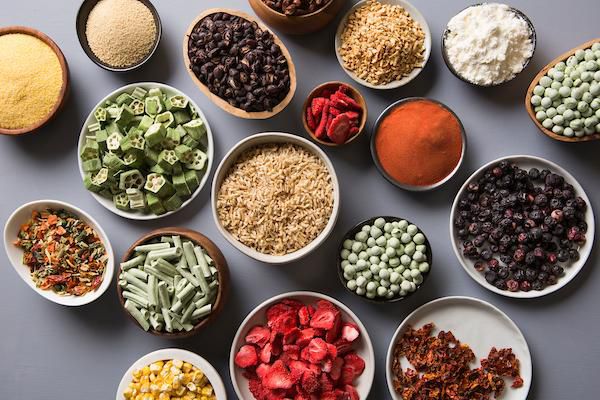Solving Food Waste with Freeze-Drying: A Sustainable Approach to Food Security
Can freeze dried foods solve the food waste problem nowadays?
FREEZE DRIED FRUITSHEALTHFREEZE DRYFREEZE DRIED SNACKSFREEZE DRIED PRODUCTSENVIRONMENTECONOMICSFREEZE DRIED FOODSFREEZE DRYINGFREEZE-DRIED PRODUCT SUPPLIERSFOOD PRESERVATIONTECHNOLOGYNUTRITION
6/30/20253 min read


Solving Food Waste with Freeze-Drying: A Sustainable Approach to Food Security
Food waste is a colossal problem. Globally, an astonishing one-third of all food produced for human consumption is lost or wasted each year. This isn't just about uneaten leftovers; it's about the massive resources – water, land, energy, and labor – that go into producing food that never reaches a hungry mouth. The environmental impact is staggering, contributing to greenhouse gas emissions and straining our planet's resources. And then there's the human cost: while food is wasted in abundance, millions still face hunger and food insecurity.
But what if there was a way to significantly reduce this waste, preserve valuable nutrients, and even help ensure more people have access to safe, healthy food? Enter freeze-drying, a remarkable technology that offers a powerful solution to this multifaceted problem.
What is Freeze-Drying, Anyway?
You might have encountered freeze-dried products without even realizing it – perhaps in astronaut ice cream, instant coffee, or camping meals. At its core, freeze-drying (also known as lyophilization) is a gentle dehydration process that works in three main steps:
* Freezing: The food is first frozen at very low temperatures, much colder than a typical freezer. This turns all the water within the food into ice crystals.
* Vacuum: The frozen food is then placed in a vacuum chamber. This dramatically lowers the air pressure around the food.
* Sublimation: Here's the clever part! In the vacuum, the ice doesn't melt into liquid water. Instead, it directly changes from a solid (ice) to a gas (water vapor) through a process called sublimation. This water vapor is then collected and removed.
The result? A lightweight, shelf-stable product that retains nearly all of its original size, shape, color, flavor, and, most importantly, its nutritional value.
How Freeze-Drying Tackles Food Waste
Freeze-drying offers several key advantages in the fight against food waste:
* Extended Shelf Life: This is perhaps its biggest superpower. By removing almost all the moisture, freeze-dried foods can last for years, even decades, without refrigeration. Imagine fresh berries picked in season being enjoyed months later, or surplus vegetables from a bountiful harvest being preserved for future use. This drastically reduces spoilage at all stages – from farm to fork.
* Nutrient Retention: Unlike other preservation methods that use high heat (like canning or traditional dehydration), freeze-drying's low-temperature process minimizes damage to delicate vitamins, minerals, and antioxidants. This means the preserved food is still highly nutritious, a crucial factor in food security.
* Reduced Transportation Costs and Carbon Footprint: Freeze-dried foods are incredibly lightweight. Removing the water content significantly reduces their weight and volume, making them much cheaper and more energy-efficient to transport. This translates to lower carbon emissions and a smaller environmental impact.
* Valorizing "Ugly" Produce: Often, perfectly good fruits and vegetables are rejected by supermarkets because they don't meet aesthetic standards (they're "ugly" or oddly shaped). Freeze-drying provides an excellent avenue to process and preserve this perfectly edible produce, preventing it from going to waste.
* Creating Value-Added Products: Freeze-drying opens doors for creating new, convenient, and nutritious food products. Think about healthy snacks, ingredients for ready meals, or emergency food supplies – all contributing to a more resilient food system.
A Sustainable Approach to Food Security
Food security means that all people, at all times, have physical and economic access to sufficient, safe, and nutritious food to meet their dietary needs and food preferences for an active and healthy life. Freeze-drying directly supports this goal:
* Availability: By extending shelf life, freeze-drying makes food available for longer periods, even in remote areas or during times of scarcity (e.g., after natural disasters).
* Access: Reduced weight and spoilage make freeze-dried foods more accessible and affordable to distribute, potentially reaching vulnerable populations more effectively.
* Utilization: The high nutrient retention ensures that the food consumed is genuinely nourishing, contributing to better health outcomes.
Looking Ahead
While freeze-drying technology has been around for decades, its potential to address food waste and enhance food security is only now being fully explored. As the global population grows and climate change impacts agricultural yields, sustainable solutions like freeze-drying will become increasingly vital. From small-scale community initiatives preserving local harvests to large industrial operations tackling surplus food, freeze-drying offers a powerful, elegant, and sustainable answer to some of the most pressing challenges facing our food system today. By embracing this innovative technology, we can move closer to a future where less food is wasted, and more people have access to the nourishment they need.
Quality
Premium freeze-dried products for healthy snacks and long-term storage.
Innovation
Sustainability
© 2024. All rights reserved.
